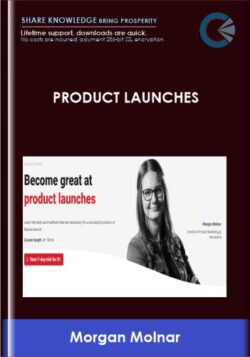Brand Tracking 101 – ConversionXL, Phil NotinghamEveryone knows brand is important, but few marketers really know how to measure it properly. In this course, we are going to look at the different ways of measuring brand and ensure that at the end of it you have a meaningful, actionable dashboard that can improve your strategy.Small businesses can and should measure brand marketing as well, and this course provides techniques and tools applicable to these companies, as well as enterprises.After taking this course you’ll…Understand the four core brand measurement concepts, what they tell you about wider brand performance, and how to pick the right metrics for your organisation to ensure your brand tracking is always actionable.Explore some of the tools available on the market for social listening, market research and website measurement, and how these tools can be used to pull together brand metrics.Infer strategy implications from brand metrics, and appreciate how they can guide improvements to marketing invesments.Your course curriculumBRAND TRACKING 1011IntroductionOverview of the ways to track and measure your brand performance, introducing the four concepts of brand awareness, brand engagement, brand affinity and brant sentiment.Topics covered:Appreciate the structure and plan for the course, including what we’ll be learning and what the outputs will be at the end.2Differentiate and Examine Brand Measurement ConceptsFurther explanation of the four core brand measurement concepts, and appreciating the inherent challenges with brand measurement vs. performance marketing measurement.Topics covered:Contrast brand awareness, brand engagement, brand affinity and brand sentiment, and why each concept can provide unique insight that connects to strategy.Appreciate the inherent challenges with brand measurement, and why brand marketing needs to be measured in parallel to performance marketing.Recognize the difference between metrics, KPIs and goals, and why each one plays an important role in making brand tracking an actionable endeavor.3Collect Market ResearchReview the data we can collect through regular surveys of target audience members and explore the value of customer surveys for brand measurementTopics covered:Understand methods for undertaking market research, and why specific questions elicit valuable responses to ascertain brand awarenessExplore the tools available for cheap and effective market research and why they are accessible to small businessesHow to prepare a market research survey to inform your brand measurement.4Set up Social Listening and MeasurementAn exploration of the data available through social listening, and examples of how to set up reporting with various tools.Topics covered:Learn how to use Mention, TrueSocialMetrics and Awario to set up social listening, and why these tools are easy and cheap means of acquiring quality data.Understand the core metrics provided by social listening, and why they are provide specific insights about your brand on social media.Avoid the mistakes small businesses typically make with inferring meaning from social listening data.5Organize CRM tracking and scoringAn exploration into how CRM systems can be used to track brand engagement and brand affinity, especially when investing in audience building or elevated content marketing.Topics covered:How to implement fan scoring in parallel to lead scoring in your CRM system, and why this can provide a new and valuable lens on your contact database.The different types of triggers which can infer meaningful insights about brand metrics and why these are worth trackingUnderstand why brand affinity is so closely correlated to time spent, and why measuring this is so critical to many brand strategies, especially in b2b6Interpret Website AnalyticsExplore the data provided by Google Search Console and Google Analytics, looking at what insights they can provide for brand measurement.Topics covered:Explore how impressions, clicks and click-through rate in Google Search Console can provide useful proxies for brand measurement, and why this is particularly useful for smaller businesses.Analyse the metrics in Google analytics to determine which can be used for brand tracking, and why they can be viable proxies in certain circumstancesInterpret SEO link data from a brand measurement perspective, and why for businesses actively engaging in digital PR this data can provide useful proxies.7Choose your Brand Metrics and Set up DashboardsIdentify the Brand metrics most appropriate for us in our business and build a dashboard to measure these metrics and KPIsTopics covered:How to use Google Data Studio to combine data from multiple sources and why this process can help you build a viable brand dashboard.Understand the four brand measurement concepts, and why different metrics can act as viable proxies.Setting up KPIs and metrics together in a dashboard, and why this provides a useful way to enable quick brand “health checks”.8Strategy Implications from Brand Tracking ResultsA summary of the what changes in each brand metric means, and how you need to respond to this strategically.Topics covered:Learn what falling brand awareness means from a strategy perspective, and why certain ways of responding to this are beneficial.Learn what falling brand engagement means from a strategy perspective, and why certain ways of responding to this are beneficial.Learn what falling brand affinity means from a strategy perspective, and why certain ways of responding to this are beneficial. Are you interested in? Brand Tracking 101 – ConversionXL, Phil Notingham Download, brand tracking 101, brand tracking best practices, brand tracker, brand 101, brand 10.24. Purchasing Brand Tracking 101 – ConversionXL, Phil Notingham course now, You can get it with the LIFETIME SUPPORT and UNLIMITED DOWNLOAD.
 Product Launches – ConversionXL, Morgan Molnar
₹60,590.00
Product Launches – ConversionXL, Morgan Molnar
₹60,590.00
 Audience Building – ConversionXL, Phil Nottingham
₹60,590.00
Audience Building – ConversionXL, Phil Nottingham
₹60,590.00
Brand Tracking 101 – ConversionXL, Phil Notingham
₹60,590.00




